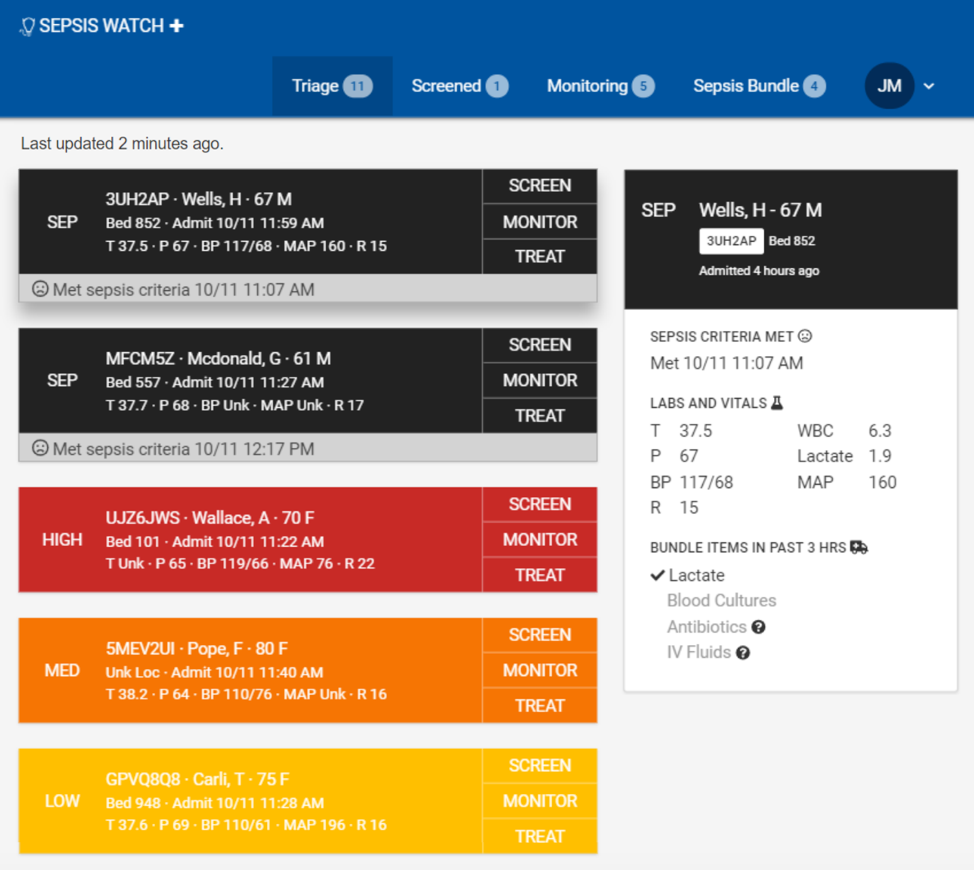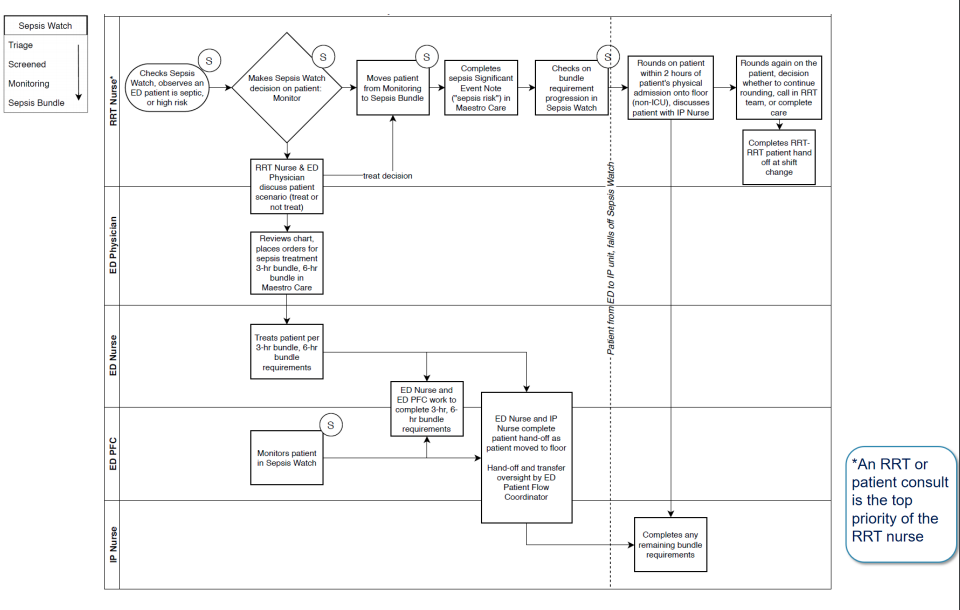Background: Sepsis is one of the top causes of inpatient mortality and rapid detection presents numerous challenges. In March, 2016, an interdisciplinary team consisting of top clinicians, data scientists and machine learning experts at a large academic medical center (AMC) embarked on an innovation pilot to develop a novel machine learning model to detect sepsis. A computable sepsis definition and deep learning model were developed using a curated dataset capturing over 43,000 inpatient admissions between October 1, 2014 and December 31, 2015. Relevant features were identified by our interdisciplinary team, including 5 vitals, 29 analytes, 10 medication classes, and 35 baseline covariates. Ten computable sepsis definitions were compared and our clinicians agreed on the following: >= 2 SIRS criteria, blood culture order, and lab evidence of end organ damage. This sepsis definition identified patients early in the hospital course: 38% of cases occur an average of 1.3 hours after presentation to the ED and 42% of cases occur an average of 15 hours after hospital admission. At 4 hours prior to sepsis, the best deep learning model generated 1.4 false alarms per true alarm at a sensitivity of 80%, compared to 3.2 false alarms per true alarm for National Early Warning System.
Purpose: Sepsis Watch detects sepsis early, guides completion of appropriate treatment, and supports front-line providers with minimal interruption of clinical workflows. Key Performance Indicators include emergency department (ED) length of stay, hospital length of stay, inpatient mortality, intensive care unit requirement, and time to antibiotics for patients who develop sepsis. A clinical trial has been registered with the primary outcome of rate of CMS treatment bundle completion for patients who meet sepsis criteria.
Description: The core technology components of Sepsis Watch are web services to extract electronic health record (EHR) data in real-time, a data pipeline to normalize features, a computable sepsis definition, a deep learning sepsis prediction model, a web application (Figure 1), an automated report that calculates KPI performance, and a model input and output monitoring tool. A suite of education, training, communication, and workflow materials (Figure 2) were also prepared with nurse educators and are hosted on an intranet training site. After a three-month silent period, Sepsis Watch was deployed in the ED of the 1,000 bed flagship hospital on November 5, 2018.
Conclusions: Sepsis Watch is the first deployment of deep learning model in real-time to detect sepsis integrated with an EHR. The tool is used by Rapid Response Team (RRT) nurses and emergency department charge nurses to provide proactive support to ED providers to identify and manage sepsis. A six-month clinical trial will be completed in May 2019 to rigorously assess the clinical and operational impact of the program.


